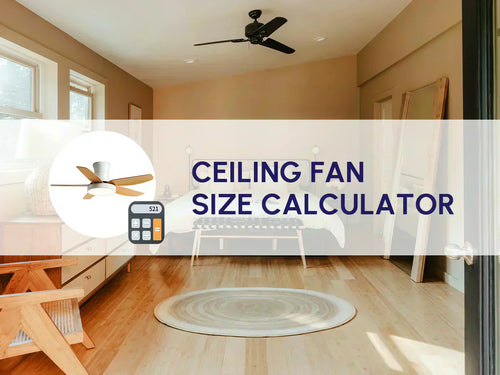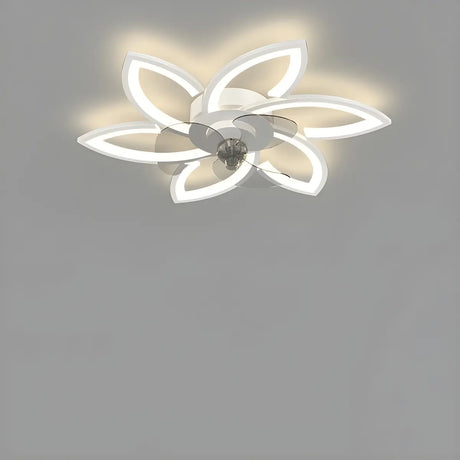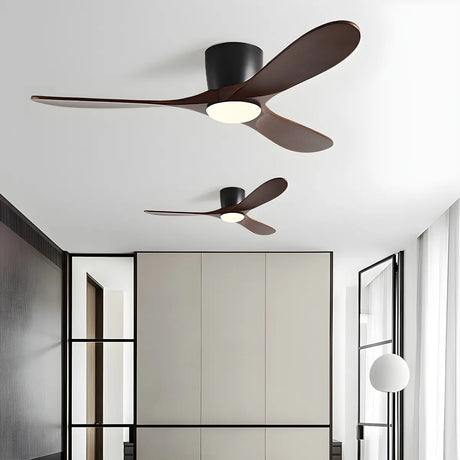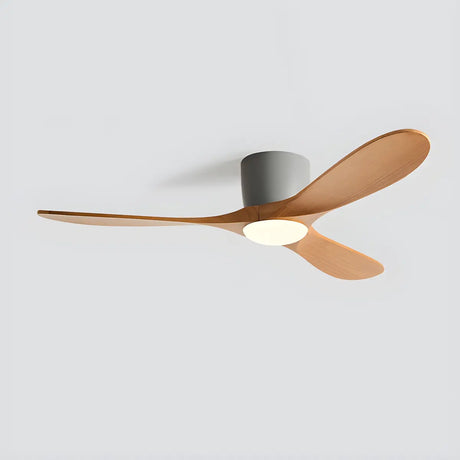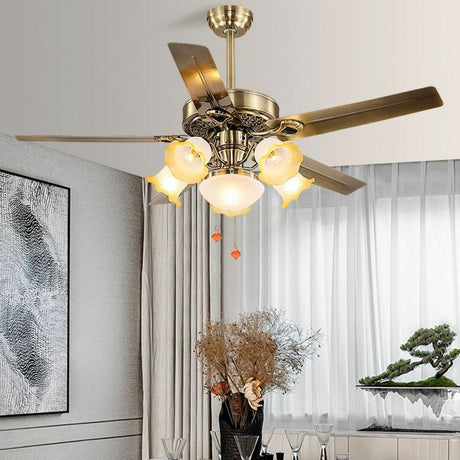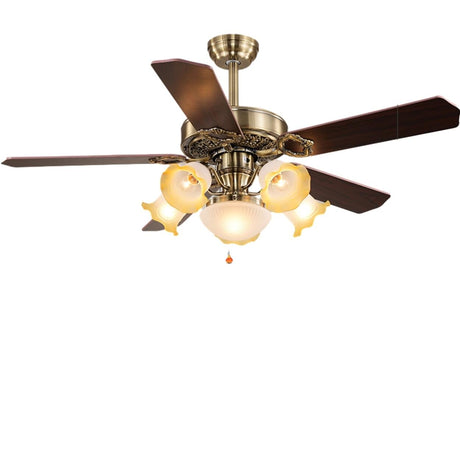Your ceiling fan can cut your energy bills by up to 40% - but only if it spins the right way. Most people get this wrong and waste money all year long.
The ceiling fan direction isn't just about staying comfortable. It's about using physics to your advantage. One direction cools you down, the other heats your room more efficiently.
This guide shows you exactly which way to spin your fan and why it works.
Table of Contents
- Which Way Should a Ceiling Fan Turn in the Summer?
- Which Way Should a Ceiling Fan Turn in the Winter?
- Why Changing Fan Direction Seasonally Matters?
- How to Change Your Ceiling Fan Direction?
- Common Mistakes That Waste Energy
- Quick Reference: Seasonal Fan Settings
- Signs You Need a Better Ceiling Fan
- The Bottom Line
- FAQs
1. Which Way Should a Ceiling Fan Turn in the Summer?

Your ceiling fan should spin counterclockwise in summer. When you look up at the blades from below, they move from right to left. Most fans call this the "forward" direction.
This counterclockwise motion pushes air straight down toward you, creating that cooling breeze you feel on hot days. The moving air creates a "wind chill effect" on your skin - it speeds up sweat evaporation and makes you feel 4-6 degrees cooler than the actual room temperature.
In summer, run your ceiling fan at medium to high speed. The stronger the downward breeze, the cooler you'll feel. To test if you've got it right, stand directly under the fan - you should immediately feel air flowing down on you.
2. Which Way Should a Ceiling Fan Turn in the Winter?

Your ceiling fan should spin clockwise in winter. When you look up from below, the blades move from left to right. Most fans call this "reverse" direction.
Spinning clockwise draws cool air upward and sends warm air from the ceiling back down into the room. Instead of having heated air trapped overhead, you get better heat distribution throughout your room.
Keep it on low speed only. Higher speeds create cold drafts that make you shiver. You want gentle air circulation, not a breeze.
To check if it's working. Stand under the fan, and you should feel no direct air movement on your skin. Instead, your room should feel evenly heated from floor to ceiling.
3. Why Changing Fan Direction Seasonally Matters?
Switching your ceiling fan direction twice a year isn't just about comfort - it's about real energy savings. The seasonal adjustment creates opportunities to reduce your HVAC workload without sacrificing how comfortable you feel.
Reducing summer cooling demands
Since your fan makes you feel 4-6 degrees cooler, you can turn up the AC thermostat and still stay comfortable. Most people can adjust their AC up 3-4 degrees without noticing any difference in comfort.
| Raise Your AC From | To This Setting | Monthly Savings |
| 72°F | 76°F | $45-60 |
| 73°F | 77°F | $40-55 |
| 74°F | 78°F | $35-50 |
This approach reduces cooling costs by 30-40% during peak summer months. Over a full cooling season, that translates to $150-200 in lower electricity bills.
Improving winter heating efficiency
Better heat distribution means you can lower your thermostat 2-3 degrees while maintaining the same comfort level. This typically reduces heating costs by 15% - anywhere from $50-150 over a full winter, depending on your home size and local energy rates.
The energy consumption difference
Your ceiling fan uses only 50-75 watts of electricity - about the same as a light bulb. Your HVAC system uses 3000-5000 watts. Combined, correct ceiling fan use can help cut your yearly energy costs by $200 to $350.
4. How to Change Your Ceiling Fan Direction?

Regardless of your fan type, always turn it off and let it come to a complete stop before changing direction. Never try to switch fan direction while the blades are moving.
Physical switch method
Most ceiling fans come with a small switch on the motor housing to change the direction. Look for a switch that slides up/down or left/right. This switch is usually located on the side of the motor housing, near where the blades attach.
First, ensure the fan is completely turned off. Then, locate the small toggle switch on the motor housing-usually near where the blades connect. Slide the switch to the opposite position. Once done, turn the fan back on to ensure it's spinning in the desired direction.
Remote control method
Many modern fans come with remote controls that have a reverse button. Look for buttons labeled "Reverse," "REV," or showing directional arrows.
Some remotes require you to hold down the fan speed button until an indicator light flashes. Check your fan's manual for the specific sequence.
Smart fan method
WiFi-enabled smart fans can be reversed through mobile apps or voice commands. Popular commands include "Alexa, reverse the bedroom fan" or "Hey Google, change fan direction."
The app usually shows a simple toggle or arrow button to change direction instantly.
Hidden switch troubleshooting
Can't find a switch? Check under light fixtures or decorative covers. Some switches hide behind sliding panels on the motor housing. If your fan is painted, the switch might be painted over - look for a small rectangular outline.
5. Common Mistakes That Waste Energy
Ceiling fans can save energy when used correctly, but simple mistakes can cancel out those benefits. Avoid these common errors to keep your energy bills in check.
Running the winter fans too fast
The biggest mistake is using high speed in winter. This creates cold drafts that make you shiver and reach for the thermostat. Winter fans should barely be noticeable - think gentle circulation, not a breeze.
Forgetting to switch the fan direction seasonally
Many people set their fan once and forget it. You need to switch direction twice a year - typically in spring (to summer mode) and fall (to winter mode).
Believing more fan blades = better airflow
This is a common myth. Three-blade fans are often more efficient than five-blade fans. Focus on blade pitch and motor quality instead of blade count.
Using fans in empty rooms
Ceiling fans cool people, not rooms. Running a fan in an empty room wastes electricity. Turn off fans when you leave the room.
6. Quick Reference: Seasonal Fan Settings
| Season | When to Switch | Direction | Speed | Thermostat | Test |
| Spring/Summer | First AC use (March-May) | Counterclockwise | Medium-High | +3-4°F | Feel downdraft |
| Fall/Winter | First heat use (Sept-Nov) | Clockwise | Low | -2-3°F | Minimal airflow |
Set reminders: March 15th and October 15th work for most climates.
Memory trick: Spring forward = Fan forward (counterclockwise). Fall back = Fan back (clockwise).
7. Signs You Need a Better Ceiling Fan

Older or low-quality fans limit your energy-saving potential. Watch for these upgrade signals.
Missing or broken reverse function
No switch visible anywhere, switches that don't actually change direction, or switches that feel loose and make crackling sounds all signal problems. Without reverse capability, you're missing out on energy savings.
Weak airflow output
You should feel a good breeze even on lower speed settings. If you barely feel any air movement on high speed, something is wrong. The problem is usually a small motor or worn-out parts.
Noisy directional switching
Brief clicking when switching directions is normal. But grinding, squealing, or constant rattling means trouble. These sounds usually indicate worn bearings or motor problems. Noisy fans waste energy and will eventually break down completely.
Outdated and inefficient design
If your ceiling fan is more than 15 years old, it's probably using 50 to 100 percent more electricity than current Energy Star certified models. This adds up quickly on your utility bills, especially if you run the fan frequently.
If your ceiling fan has a lighting function, check what type of bulbs it uses. Many older ceiling fans come with incandescent bulbs that generate heat while using much more electricity than LED alternatives. This defeats part of the cooling purpose and increases your energy costs.
The Bottom Line
Your ceiling fan direction makes a real difference in both comfort and energy costs. The science is straightforward: counterclockwise for summer cooling, clockwise for winter heat circulation. Change direction twice a year, match your speed to the season, and adjust your thermostat accordingly.
Take five minutes this week to check your fan direction. Those energy savings add up faster than you might expect, and you'll be more comfortable all year long. Sometimes the simplest changes make the biggest difference in your monthly bills.
FAQs
Can I change direction while the fan is running?
Can I change direction while the fan is running?
No. Always turn off the fan and let the blades stop completely before switching direction. Changing direction while running can damage the motor and pose safety risks.
Do all ceiling fans reverse?
Do all ceiling fans reverse?
Most ceiling fans made after 1995 have a reverse function. However, some budget, older, industrial, or outdoor models may not include this feature.
Why does my fan wobble more in one direction?
Why does my fan wobble more in one direction?
Direction changes can highlight existing balance issues. Check for loose screws, bent blades, or dust buildup. Severe wobbling might require professional adjustment.


